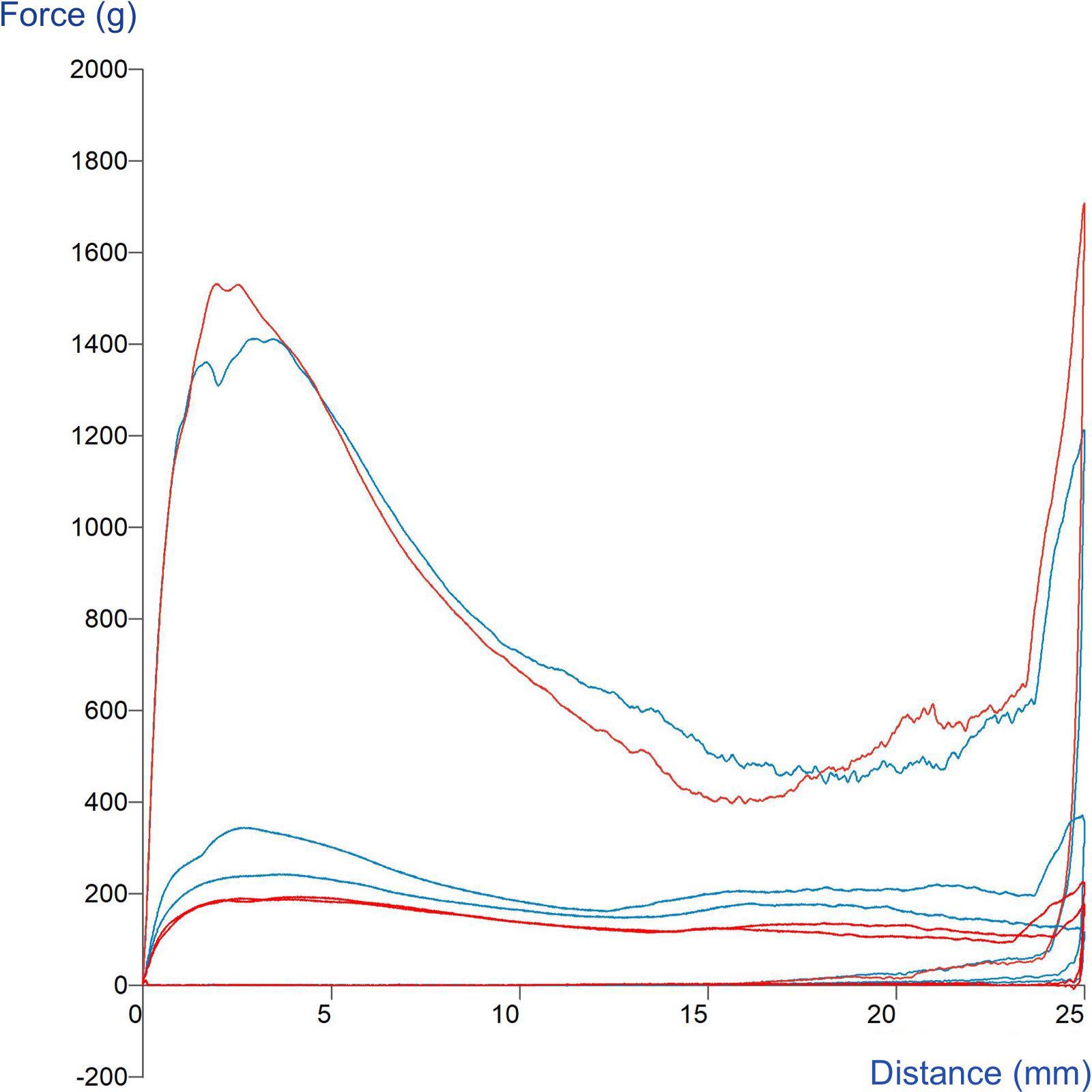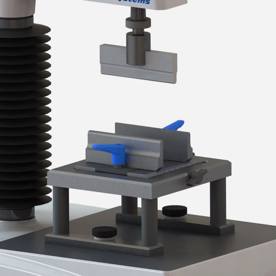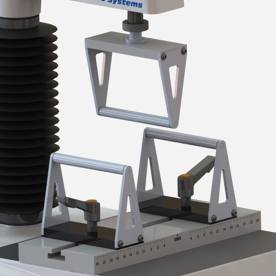
Bend and flexure testing
Learn about bend and flexure testing, when to use these test types and the typical probes and attachments for use on a Texture Analyser.




What is a bend / flexure test?
A bend / flexure test measures the force required to bend or break a material. It is used to assess brittleness, flexibility, fracture strength, and stiffness in solid or semi-rigid samples, often in the shape of a sheet/bar. During testing, a Texture Analyser applies a controlled load via a central probe/blade or a side load (cantilever) until the sample bends or fractures, providing insight into its mechanical integrity. If no break occurs, flexibility can be quantified instead.
Bending tests combine tension, compression, and shear forces. When the material exceeds its tensile limit, fracture propagates along the outer surface, revealing its fracture resistance or brittleness.
How a Texture Analyser performs a bend / flexure test
A Texture Analyser lowers a central probe or blade between two supports (three-point bend setup) or is held at one end and loaded on the other (cantilever) while recording force vs. distance/time. The data reveals the force required to bend or break the sample and the shape of the curve indicates whether the product is brittle, flexible, or tough.
Typical graphs produced and properties measured
Bend/flexure tests produce a sharp force-distance curve, often completed in less than one second, requiring high data acquisition speed (up to 2000 points/s) and can quantify a wide range of mechanical and textural properties including stiffness, flexibility and toughness.
Single or multiple parameters such as peak force, energy and distance to break and flexural modulus can be collected from the graph. Understanding these parameters reveals key flow behaviours and allows direct comparison between samples or production batches.
To learn more about how these properties are measured, visit our Textural Properties page.
Choosing an attachment for sample measurement
Selecting the correct rig ensures accurate alignment and representative results for each product type. There are three types of bending test.
Three Point Bend
Cantilever
Compression / Penetration bending
This type of bending test is a collection of different examples of how the sample can be forced to bend in all directions (biaxially) either from application of load from a small penetration probe, compression probe, or from compression at both ends. These are unusual imitative tests designed to mimic the stresses that the sample can experience in real life and thereby providing a means to test the samples reaction to these stresses.
| Attachment / Rig | Typical use | Notes |
| Small / Miniature Three Point Bend Rig | Snack bars, biscuits, tablets | Use for shorter or thinner samples. Choose a span that supports the sample without edge effects; keep loading blade centred for repeatability. |
| Large Three Point Bend Rig | Chocolate bars, rigid plastics | Better for longer/wider or stiffer samples. Set a larger span to avoid shear dominating the break; ensure supports are parallel and level. |
| Crisp Fracture Support Rig | Brittle foods such as crisps, wafers | Provides gentle, stable support to prevent pre-cracking. Use low trigger force and a small probe to capture the first fracture event cleanly. |
| Lipstick Cantilever Rig or Eye Pencil Rig | Cosmetic break strength and bending flexibility | Cantilever-style bending. Clamp carefully to avoid crushing; keep a consistent protruding length because it strongly affects break force. |
| Spaghetti Flexure Rig | Dried pasta and noodle bend strength | Cantilever bending for slender, brittle strands. Align the strand straight and avoid twisting; control humidity/conditioning as it hugely changes results. |
| Ice Cream Cone Support Rig | Wafer cone testing | Atypical bending/bi-axial loading. Support the cone fully to mimic real handling; use a compression or penetration probe depending on whether you want crush vs local fracture. |
Materials and bespoke attachments
Bespoke geometries or materials can be produced to customer specification for specialised tests.
Use cases by industry
|
Industry |
Example applications |
Typical Probe / Attachment |
|
Food |
Biscuit or chocolate snap, crisp fracture, vegetable flexibility |
Three Point Bend Rig, Crisp Fracture Rig |
|
Cosmetics |
Lipstick break strength, eye pencil flexibility |
Lipstick Rig |
|
Packaging |
Film bending resistance, paperboard stiffness |
Three Point Bend Rig |
|
Pharmaceuticals |
Tablet fracture |
Miniature Three Point Bend Rig |
|
Industrial materials |
Plastic and laminate flexural strength |
Large Three Point Bend Rig |
Example standard methods using a bend / flexure test
- ASTM D790 Standard test method for flexural properties of unreinforced and reinforced plastics and electrical insulating materials
- ISO 5628 Determination of bending stiffness of paper and board
What else do I need to perform a bend / flexure test?

Heavy Duty Platform
Flat, stable base with sample centralisation concentric rings which also raises the sample test area away from the base of the instrument which may become warm over time and will affect temperature dependent samples.

Calibrated Load Cell
Ensure measurement within correct force range.

Temperature control
For the testing of temperature sensitive samples.
More examples of how a Texture Analyser performs bend / flexure tests
People also ask
What does a bend / flexure test measure?
It measures the force needed to bend or break a sample, providing data on brittleness, flexibility, and fracture strength.
How fast should fracture tests be run?
Because breaks occur in milliseconds, a high data collection rate (up to 2000 points per second) ensures accurate curve capture with no loss of detail.
How can bending tests improve product design?
They reveal how composition or moisture affects brittleness, helping optimise formulations for strength and consumer experience.
Why perform a bend / flexure test?
Bend / flexure tests are used when a material must be strong yet flexible enough to resist breaking under normal use.
Results reveal how formulation, storage, or humidity affect product robustness and consumer handling performance.










